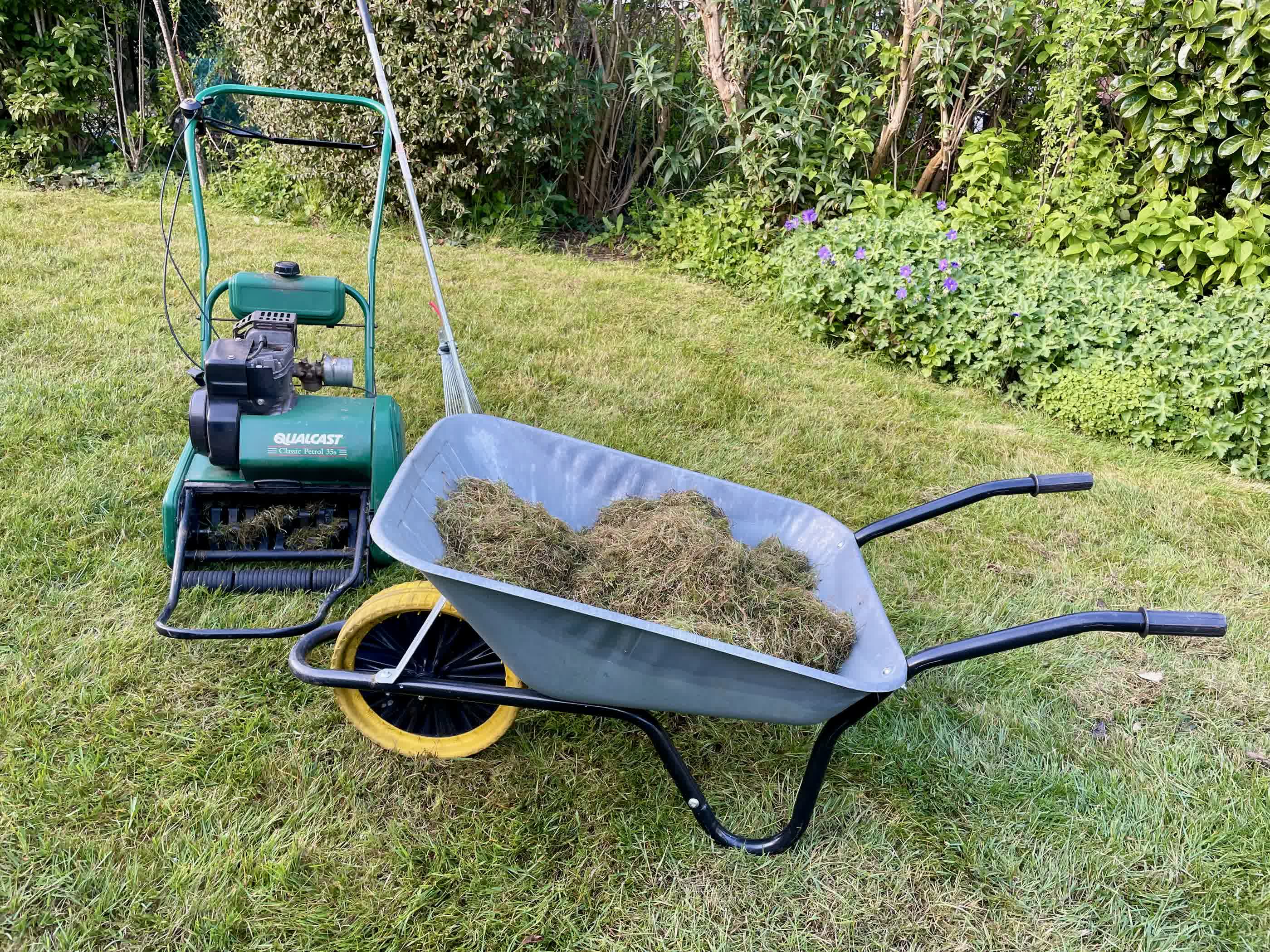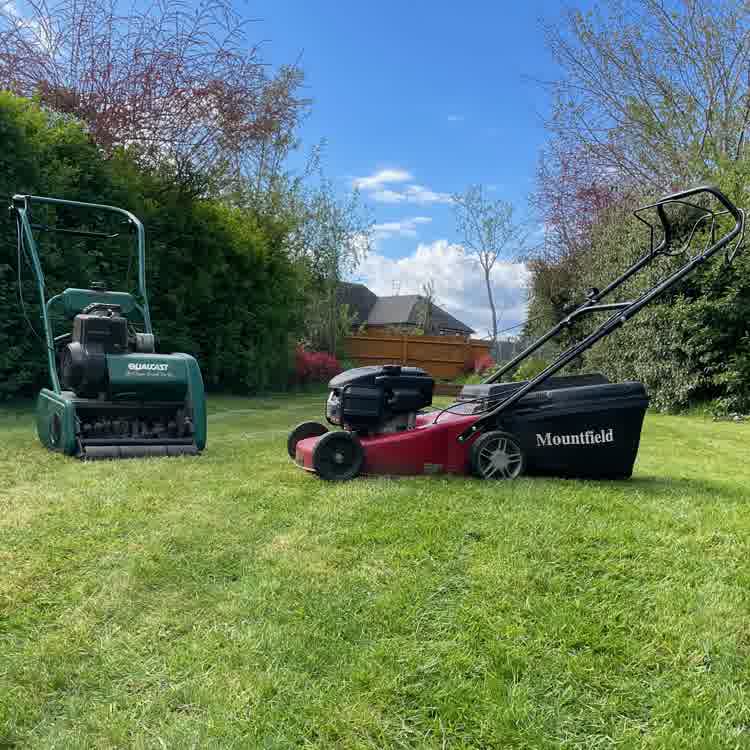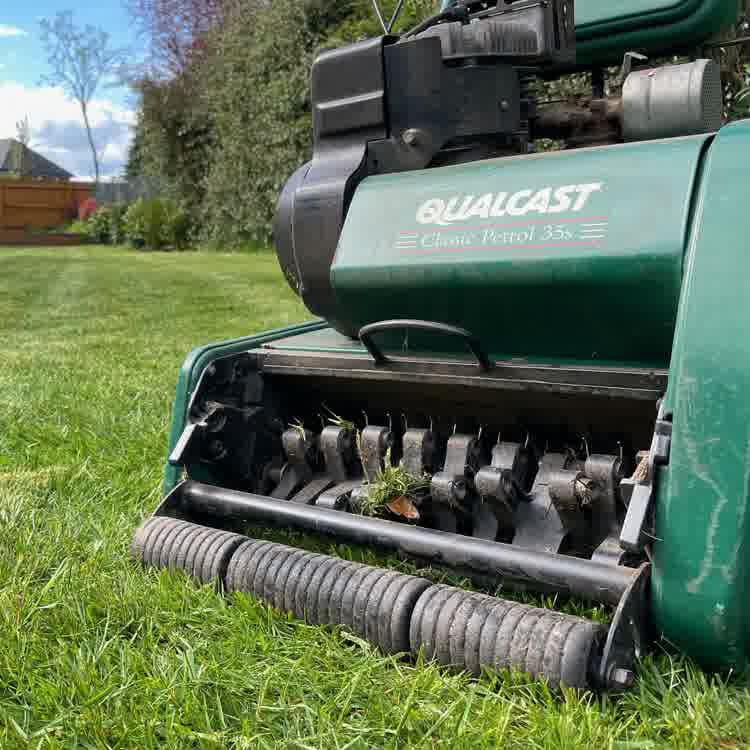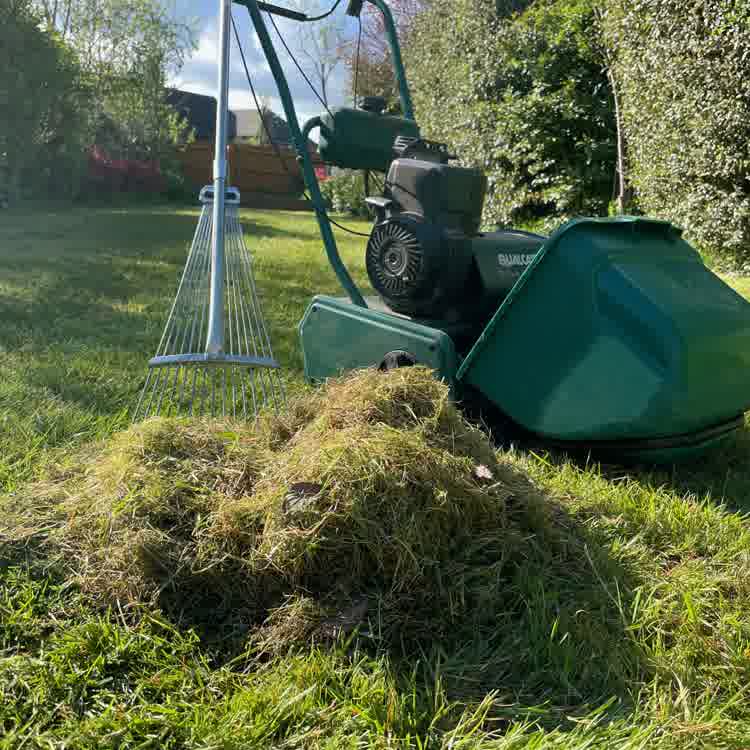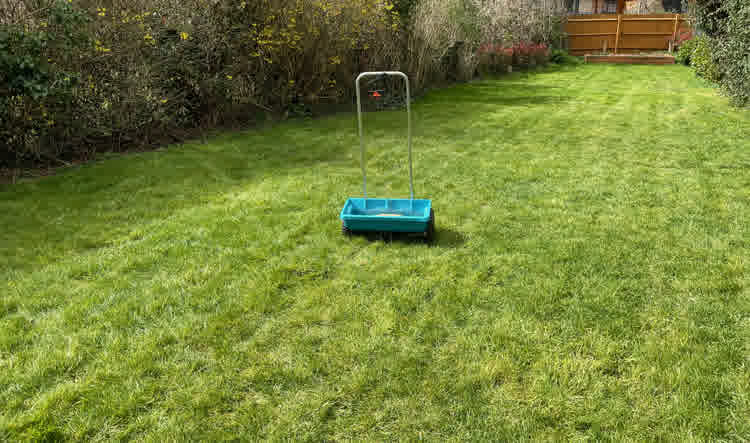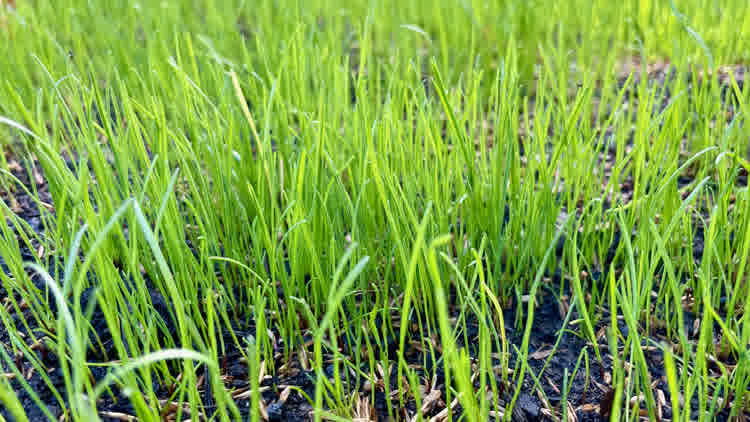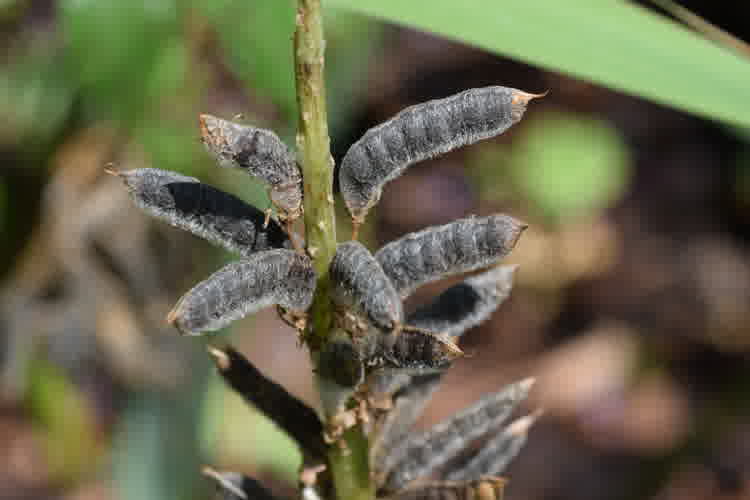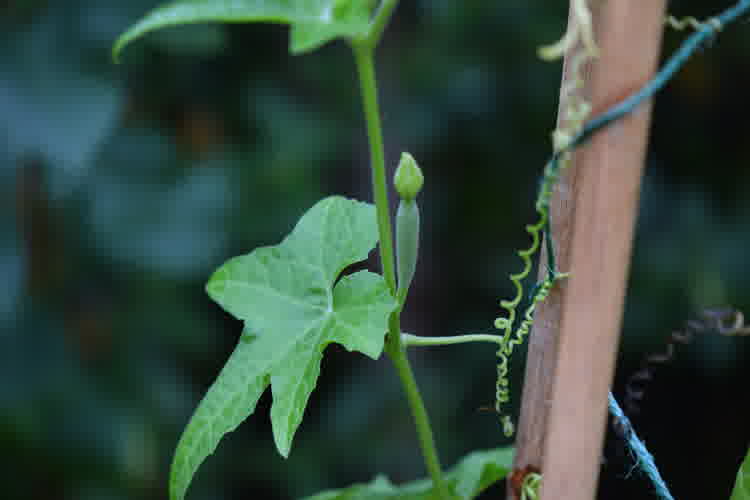What is scarification?
Scarification is the removal of thatch, a layer of plant material that accumulates on the soil surface. Thatch consists of dead and living vegetation and should be removed to maintain a healthy lawn.
Why should I scarify my lawn?
A small amount of thatch is beneficial for the lawn.
It helps to retain moisture that would otherwise be lost through evaporation and safeguards the crown of the grass against potential damage from excessive direct sunlight.
However, if not properly managed over time, the accumulated thatch can have a negative impact on your lawn. Once it builds up, the thatch can restrict the flow of air, water, and nutrients to the soil, inhibiting grass growth and increasing the risk of lawn diseases. Therefore, it is recommended to scarify your lawn at least once a year. This practice prevents excessive thatch buildup and its detrimental effects.
When is the best time to scarify?
Mid-spring or early autumn are considered the optimal times to scarify.
Scarification is a tough process for your lawn. Therefore, ideal environmental conditions such as warm weather and plenty of rainfall will encourage new strong growth, speeding up the recovery. Avoid heavy scarification during the hot summer months or when the lawn is dormant throughout the winter.
